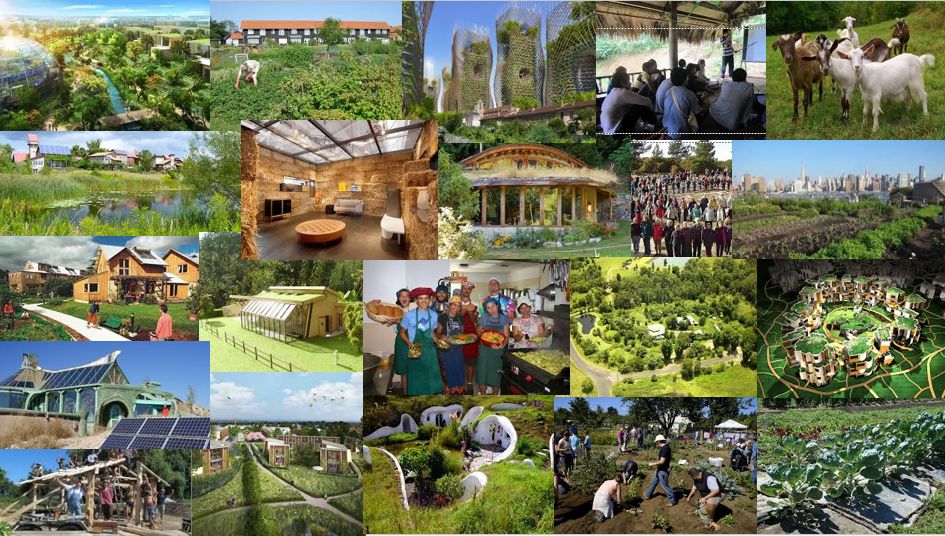Most utopian communities are, like most start-ups, short-lived. What makes the difference between failure and success?
At 16, Martin Winiecki dropped out of school and left his home in the German city of Dresden to live full-time at Tamera, a 300-acre intentional community in the rolling hills of southwestern Portugal. His mother and father – a doctor and a professor of mathematics – were reluctant to let him go. ‘It was quite a shock for them,’ Winiecki remembers. Born in 1990, just a few months after the collapse of the Berlin wall, Winiecki came of age in a society in limbo. The atmosphere of the former GDR still clung to people. ‘It was a culture that was so formal. So obligation-oriented. That had no heart. No love,’ Winiecki explained. At the same time, in Winiecki’s eyes, the capitalist alternative was creating a ‘system of deep economic injustice – of winners and losers’. Neither story encompassed a humanity he wanted part of. Tamera offered an alternative.
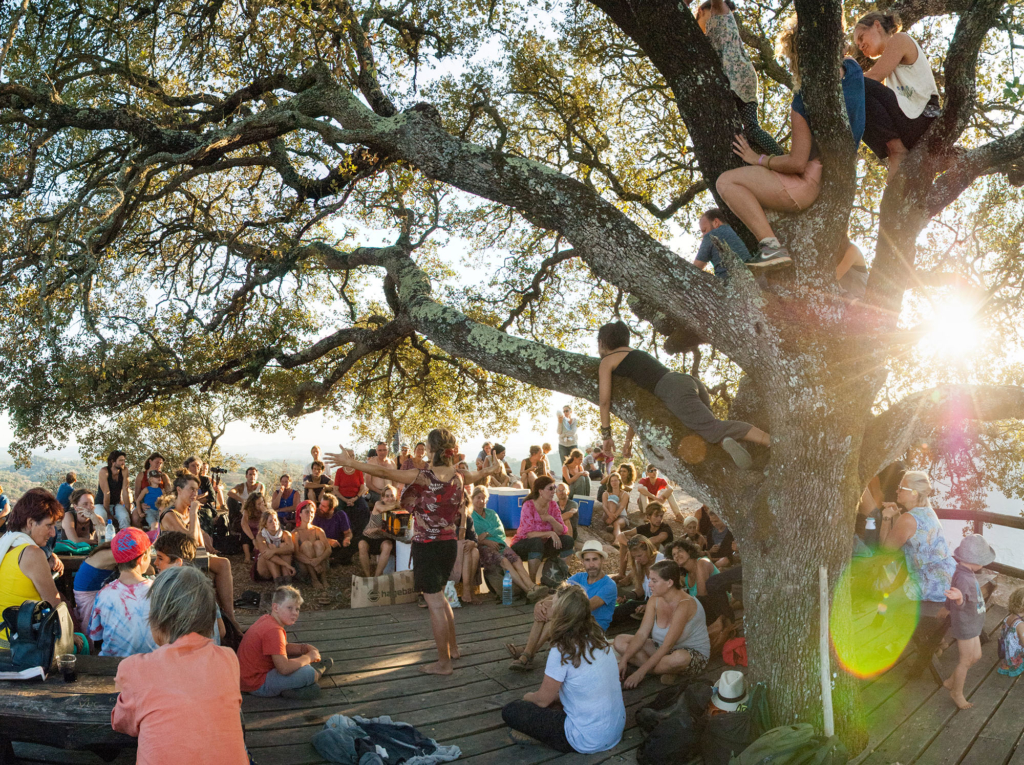
Founded by the psychoanalyst and sociologist Dieter Duhm in Germany in 1978 and re-founded in Portugal in 1995, Tamera aspired to dissolve the trauma of human relationships. Duhm, heavily influenced by Marxism and psychoanalysis, came to see material emancipation and interpersonal transformation as part of the same project. Duhm had been deeply disillusioned by communes where he’d spent time in the 1960s and ’70s, and which seemed to reproduce many of the same tyrannies that people were trying to escape: egoism, power struggles, envy, mistrust and fear, while practices of sexual freedom often engendered jealousy and pain. In Duhm’s eyes, communes had failed to create a viable model for a new society. In Tamera, he hoped to begin a social experiment that allowed for deep interpersonal healing.
Communitarian experiments such as Tamera are nothing new, although its longevity – almost 40 years – is unusual. Generally, intentional communities fail at a rate slightly higher than that of most start-ups. Only a handful of communities founded in the US during the 19th century’s ‘golden age of communities’ lasted beyond a century; most folded in a matter of months. This golden age birthed more than 100 experimental communities, with more than 100,000 members in total who, according to the historian Mark Holloway in Heavens on Earth (1951), sought to differentiate themselves from society by creating ‘ideal commonwealths’. The largest surge in communitarian ‘start-ups’ occurred during the 1840s and 1890s, coinciding with periods of economic depression. But it would be a mistake to see intentional communities merely as a knee-jerk response to hard times.
In historic terms, a broader discontent with industrial society has led to people flocking to communes, utopias and spiritual settlements, from eco-villages and ‘back to the land’ style settlements designed to create sustainable lifestyles and a stronger relationship to nature, to communities founded with spiritual or idealist visions for transforming human character and creating new blueprints of society. Of course, the ‘cult’ label is never far behind. Many intentional communities have had to fight their own public-relations battles in the wake of negative or sensational publicity.
But regardless of our suspicions, our appetite for communitarian living might even be evolutionarily hard-wired. Some sociologists have gone as far as to suggest that we are mal-adapted in modern society, and that ‘tribal’ forms of life are more viable. Theories of neo-tribalism suggest that instead of mass society, human nature is best suited to small, caring groups. The anthropologist Robin Dunbar at the University of Oxford claims that humans can comfortably maintain no more than 150 stable relationships, which suggests that communitarian living might not be so much of an ‘outlier’ or ‘experiment’. From an evolutionary perspective, modern society itself might be the anomaly. As the cultural critic Daniel Quinn writes in The Story of B (1996), for 3 million years the tribal life worked for us: ‘It worked for people the way nests worked for birds, the way webs work for spiders, the way burrows work for moles … That doesn’t make it lovable, it makes it viable.’
Why then do utopian communities so often fail? Interestingly, attrition rates for intentional communities are not all that different from many other types of human endeavour. The failure rate for start-ups is around 90 per cent, and the longevity of most companies is dismal: of the Fortune 500 companies listed in 1955, more than 88 per cent are gone; meanwhile, S&P companies have an average lifespan of just 15 years. Can we really expect more longevity from experimental communities? And if not, what can we learn from an audit of these experiments? What have been the key factors undermining communitarian living?
Perhaps the irony is that many of the administrative and managerial forces that individuals are running away from within mainstream society are exactly the organisational tools that would make intentional communities more resilient: that regardless of how much intentional communities with utopian aims seek to step to one side of worldly affairs, they succeed or fail for the very same pragmatic reasons that other human enterprises – notably businesses and start-ups – succeed or fail.
Malarial infested swamps, false prophecy, sexual politics, tyrannical founders, charismatic con-men, lack of access to safe drinking water, poor soil quality, unskilled labour, restless dreamer syndrome, land not suitable for farming: all sensationalise the rocky history of intentional communities. But the more relevant drivers that cause many communities to unravel sound more like the challenges afflicting any organisation today: capital constraints, burn-out, conflict over private property and resource management, poor systems of conflict mediation, factionalism, founder problems, reputation management, skills shortage, and failure to attract new talent or entice subsequent generations.
When the Welsh social reformer Robert Owen established New Harmony in 1825, on 20,000 acres in Indiana, he attracted an enthusiastic following, gaining more than 800 members in just a little over six weeks. The hope of New Harmony was to create a new kind of civilisation engendering copy-cat communities around the world. Owen’s vision of a ‘new moral world’ or ‘universal permanent happiness’ was committed to improving individual character through environment, education and the abolition of private property, but New Harmony lacked the hard skills to sustain itself. Of its population of 800, only 140 were adept at working in local industry, and just 36 were skilled farmers. The community was far too open and indiscriminate in its invitation, allowing anyone to join, and attracting a lot of free-riders without the necessary skills or appetite for hard work. The absence of its founder did not help; Owen lived in New Harmony only for a few months out of its short, two-year existence. Though gifted as a visionary peddler of utopia, he failed as an executor skilled at building practical operational support to realise his dreams.
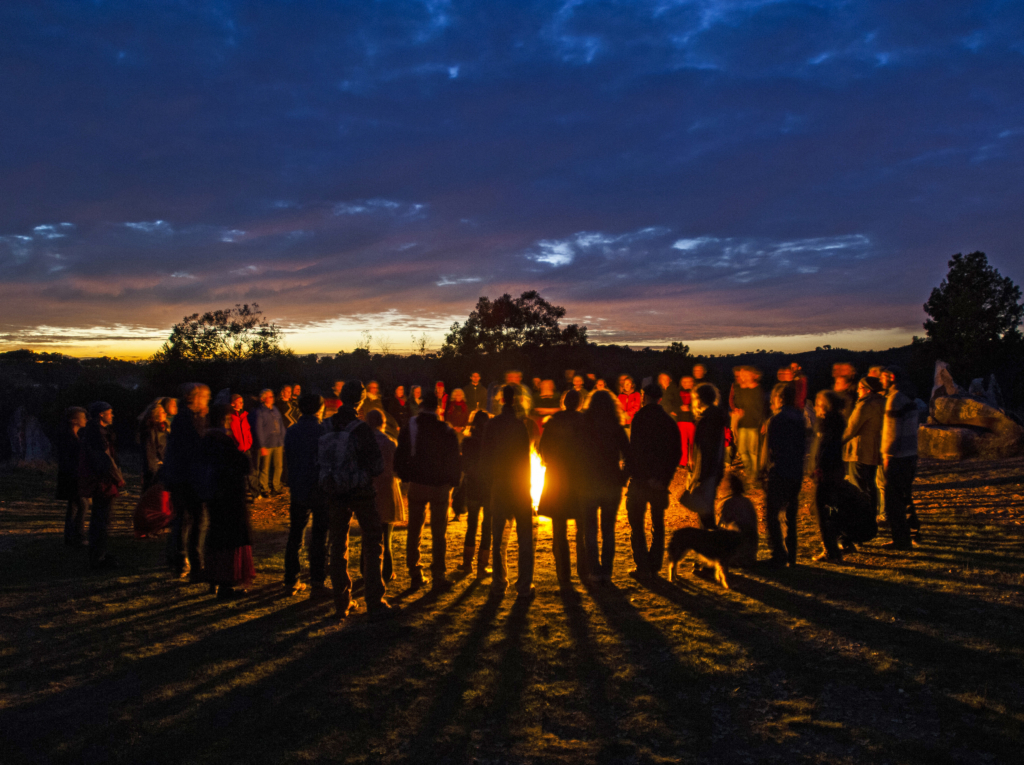
Many communities encounter this problem. Dreamers, drifters and seekers in need of belonging, the needy and wounded, and the egomaniacal and power-thirsty are a dangerous constellation of actors for sustaining a community. But often they are the most responsive to an invitation. Additionally, for many dreamers the practicalities of farming and self-sufficiency clash with their utopian hopes for radically new ways of living, as people become pulled into the myopia of just getting by. As Catherine Blinder wrote in 2004, reflecting on her 14 years on a Vermont commune:
By going ‘back to the land’ we would not be bound by the strictures of society. We existed largely beyond the edges, beyond the rules … We were creating an alternative life, and many of us genuinely believed we could make a difference, that we could stop the war and work for social justice while practising guerrilla farming and modelling a collective existence.
Blinder’s days, however, were anything but experimental. ‘Nobody works that hard as an experiment,’ she writes about her time cutting and baling hay, making butter, driving a tractor, cutting firewood, baking bread, and taking care of children, animals and the wellbeing of her peers.
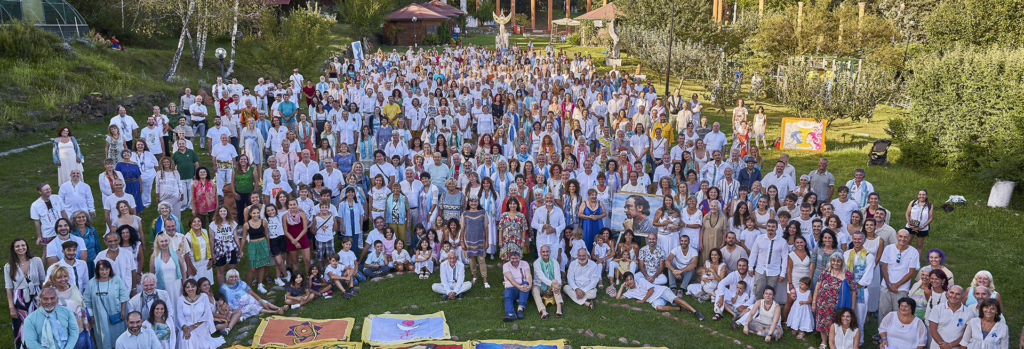
Macaco Tamerice, who left Japan as a famous jazz singer to live and work in Damanhur, a spiritual and artistic eco-community near Turin in Italy, told me that the key to Damanhur’s success has been its very emphasis on practical devotion and work (‘we’re not just a place for spiritual dreamers’). While the community aspires to keep alive what she calls the ‘divine spark in each of us’, the structure of Damanhur has also benefited from pragmatic organisational strategy.
Damanhur is a federation of communities made up of more than 600 full-time citizens, primarily organised into small ‘nucleos’, or makeshift families. The nucleos started as groups of 12 people; now they number 15-20. ‘Scale is critical,’ Tamerice cautions. ‘If you have too few people, you implode because you don’t have enough inputs. But if you have more than 25 people, then it is hard to create intimacy and keep connections close.’ The entire community is governed by a constitution that enables a so-called ‘college of justice’, which upholds the values of that constitution. Other elected roles include king/queen guides who help to coordinate Damanhur projects while seeking to maintain the spiritual ideals of the community. Before becoming a full citizen of Damanhur, aspiring citizens go through a trial period to see if they truly feel aligned with the culture and intentions of the community.
But even with the best organisational acumen, intentional communities are often heavily criticised for the backward progress they tend to symbolise. Bronson Alcott (the father of Louisa May Alcott, the author of Little Women) was characterised by the essayist Thomas Carlyle as a ‘man bent on saving the world by a return to acorns’. In 1843, Alcott founded Fruitlands, an experimental community in Harvard, Massachusetts. An agrarian commune influenced by transcendentalist thought, and built on renouncing the ‘civilised’ world, Fruitlands abolished private property and cherished, yet struggled, with self-sufficiency, refusing to hire external labour or depend on external trade. Attracting a little over a dozen people, Fruitlands failed after seven months. Acorns, it seems, couldn’t cut it.
The ‘acorn problem’ persists today. Jimmy Stice, a young entrepreneur from Atlanta, is working to build a sustainable town from scratch in a river valley in Panama. When he showed his father, a traditional real-estate investor, a mock-up of the town’s infrastructure, his father remarked: ‘Congratulations on going back in time.’ Stice had managed to re-create civilisation as it was more than 500 years ago.
Nara Pais, a Brazilian IT consultant turned eco-villager, lived for a time at the Findhorn Foundation in Scotland, one of the more successful intentional communities, which has been running since 1972 and is now a model of ecological building, with solar and wind energy. Pais explained that it took Findhorn more than two decades to overcome basic infrastructural challenges. In recent years, its income totalled £2,393,542 (though expenditure was £2,350,411) with more than 60 per cent of the revenue coming from workshops and conferences. That said, many people in Findhorn’s ecovillage still rely on the government for their living, and margins are tight: everyone has food and housing, but, says Pais: ‘There is no money for extras.’
The bottom line is that many intentional communities exist because of wealthy patrons and benefactors, and courting philanthropy and start-up capital is part of the job of charismatic founders. Nazaré Uniluz, an intentional community in the Brazilian state of São Paulo, initially survived on external funding. It had a charismatic founder who attracted donations from wealthy Brazilian elites sold on his vision of deep self-reflection, incorporating elements of monastic living. But when the community started to evolve beyond the control and vision of its founder, he left. Today, Uniluz survives by inviting people in and charging them for weekend workshops or week-long immersions. The permanent residents often find it hard to go deeper into communal living and introspection amid this constant flux of people coming in for short-term healing or to try their hand at hippie life, even while acknowledging that spiritual tourism is a significant revenue for communities such as Uniluz.
Freetown Christiania in Denmark was created in the 1970s as people took over abandoned military barracks in Copenhagen as a birthplace for a ‘new society’. It’s become a thriving site for an underground economy – including a profitable trade in cannabis. The community also created its own currency which doubles as a kitsch souvenir sold to tourists for money. Christiania is the fourth largest tourist attraction in Denmark’s capital city, and receives more than half a million visitors a year.
Piracanga, another spiritual community in Brazil, has also stayed financially healthy by catering to a market for spiritual voyeurs and wealthy elites who flock there to learn aura readings, breathing and meditation, conscious eating, dream interpretation, yoga, even clowning.
All in all, the top revenue streams for intentional communities tend to be tourism, education (workshops and trainings), crafts and artisanal goods, and agriculture. As the historian Yaacov Oved observed in Two Hundred Years of American Communes (1987): ‘[In New Harmony] the only prosperous venture was the local hotel, where the many tourists and the curious who came to see with their own eyes Robert Owen’s famous social experiment were put up.’ In fact, Owen covered New Harmony’s overall losses with a private fund. When he did make the balance sheet publicly available, community members were shocked at their illusion of self-sufficiency.
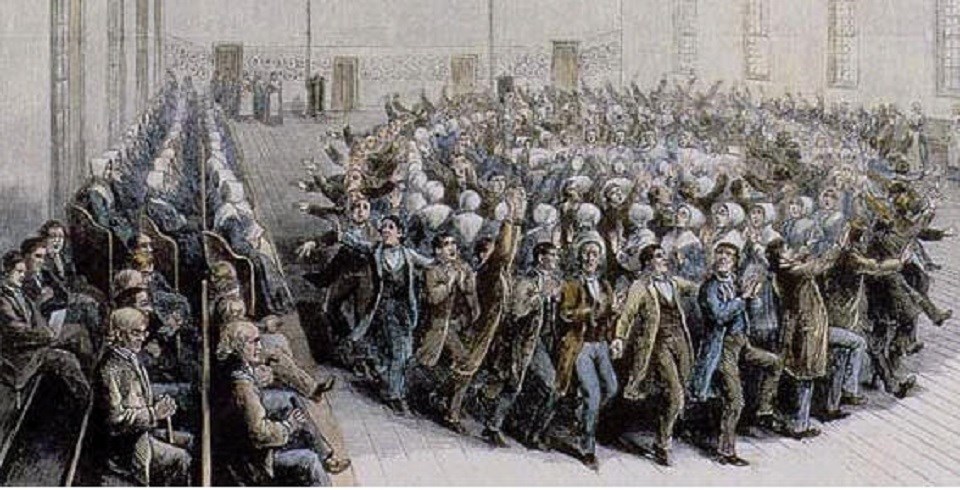
The Shakers, one of the more successful communities in US history, numbered more than 6,000 at their mid-19th-century height. Their success owed to a religious philosophy of hard work, honesty and frugality, which made them good farmers and artisans – that famous furniture! But ultimately, even with their artisanal viability, their practice of celibacy – procreation was forbidden to members of the community – undermined their sustainability. Without human reproduction, the Shakers relied on active recruitment, and celibacy wasn’t an attractive proposition to many. Today, the last Shaker village in Maine has a population of two. In contrast, the Amish – whose families produce, on average, five children – number more than 300,000.
Unusually, the Amish practice of ‘shunning’ has proved quite effective for retaining the young in the Amish lifestyle. Shunning excludes those who have transgressed community rules from commercial dealings and common social interactions (eating meals, exchanging gifts) with Amish members. It’s a way of creating a tight boundary around the community that maintains the culture, while threatening social suicide to members tempted to default from the Church.
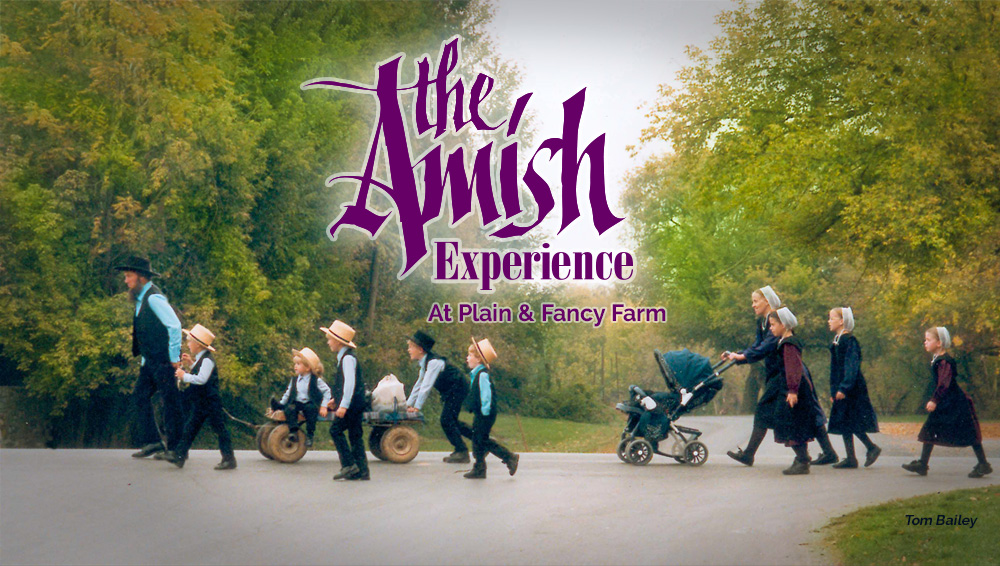
History shows that a lot of fundamentally religious 18th- and 19th-century social experiments in the US were built on practices of self-denial, repression and perfectionism that became exhausting for people to sustain, no matter the zeal of community members. William Penn’s success with Philadelphia – the province, and future commonwealth – notably came once the city grew beyond the ‘sober’ utopia of its founder’s imagination.
The question confounding nearly all those seeking alternatives to mass society, says the dystopian novelist Margaret Atwood, is: ‘What sort of happiness is on offer, and what is the price we might pay to achieve it?’ The puritan impulse towards the suppression of passion, like Penn’s insistence on sobriety, was a high price to pay for belonging. But the loose sexual practices of secular communes in the 1960s and ’70s created immense jealousies and conflicts that just as readily caused many communities to implode. Most people, of course, flock to intentional communities to fulfil emotional needs, but the capacity of a community’s relational skills are quickly tested by the personalities of its members: as Winiecki explained to me about Tamera: ‘If you go deep in a group, you can find all the light and shadows of humanity.’
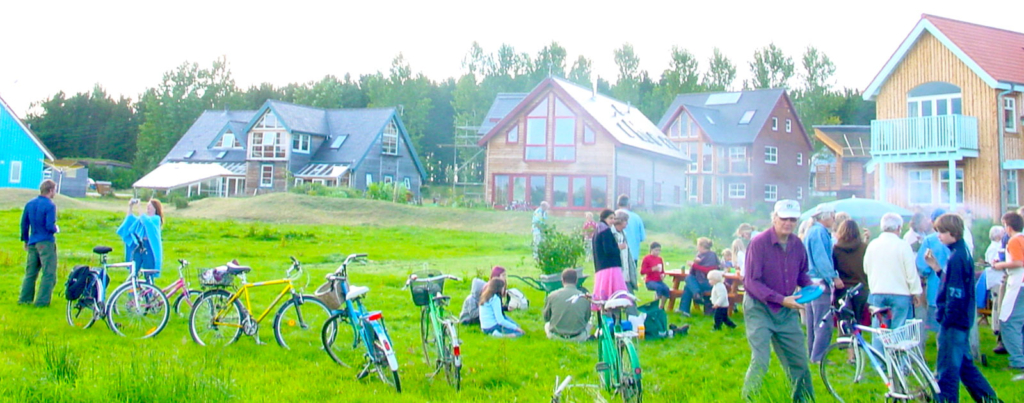
Speaking about her time at Findhorn, the social entrepreneur Kate Sutherland told me: ‘It’s not utopia. It’s microcosm. Everything that’s in the outer world is there – marginalisation, addiction, poverty, sexual issues, power. Communities are just fractals of society.’ The difference for Sutherland was that in Findhorn there was good will and a clear commitment to waking up: ‘People are willing to look at their stuff.’
Meanwhile, at Damanhur, conflicts are cleverly allowed to escalate into a playful battle that serves to exorcise community tensions and animosities. ‘The battle lets people have a defined space to bring out the natural competitive energy in each one of us in a way that is playful and constructive, and ultimately leads to a sense of unity,’ says Quaglia Cocco, who has been part of the Damanhur community for eight years. A battle at Damanhur isn’t too dissimilar from childhood play-fighting. Teams equip themselves with white shirts and squirt guns filled with paint, and judges are used to determine whether a person is still in the game or has been defeated. Battles allow members to vent their warrior natures and access more of their shadow personalities, too often repressed by the soft statues of civility to which we default.
Damanhur’s mock battles prevent the kind of burn-out you find when the most empathetic people in a community get tasked with dealing with the emotional needs of others, putting a lot a strain on the shoulders of a few. In New Zealand, one freelancer collective in Wellington has found another way of distributing the emotional load: a system of emotional stewardship. Every member of Enspiral has a steward – another person who checks in with them regularly, listens to their emotional grievances, and holds them to their commitments. As Rich Bartlett, a senior member of Enspiral, explained: ‘One of the main jobs of stewards of the culture is to be continuously weeding this beautiful garden. In practical terms, that means being really proactive about hosting conversations, calling out harmful behaviour, treating each other with compassion, prioritising relationships and feelings over process and rightness.’
Good communication, in turn, builds flexibility. As Tamerice, from Damanhur, puts it: ‘You should change things when they work – not when they don’t work. Then you have fuel. Otherwise, things get so broken down that you don’t have the energy.’ Compared with communities of the 18th and 19th centuries, this ability to pivot and change direction, to not get locked in to one path or way of doing things, creates greater resilience over time. It’s another lesson more communities might learn from start-up culture. When I asked a Hummingbird elder about the key to the success of their community in New Mexico, he said: ‘It’s about not getting undermined by one meme.’ Communities, like start-ups, need oxygen (not dictatorship). They need to trial innovations and re-invent themselves organically, responding to the changing needs of members.
The real challenge for successful communities comes, as it does inside companies, when core values must pass to the next generation. The ‘superficial things – the specific rituals and practices’, in the words of Tamerice – are less critical. And yet, generational conflicts seem to be par for the course, especially when an inspired leader or a generation of elders is unwilling to relinquish control. Mary Baker Eddy, the founder of the Christian Science movement, was militant about quality control: as the late psychologist Eugene Taylor pointed out in Shadow Culture (1999), instead of a loose-knit confederation of churches over which she could exert little control, Eddy’s ministry was constituted around an overweening mother church. Individual sermons were forbidden, and no free interpretation was permitted. This inability to cede control is a common founder problem within intentional communities, leading to factionalism and splinter groups.
Within the entrepreneurial sector, start-up founders tend to be replaced once the characteristic passion that was an asset in catalysing a venture is no longer seen as the best attribute to sustain and grow an organisation. This is reflected in statistics. More than 50 per cent of founders are replaced as CEOs by the time a start-up raises its third round of financing: after first-round financing, 25 per cent of founders have already been replaced.
However, having a visionary founder as a figurehead is almost always an essential ingredient of success – someone who carves out a coherent vision, empowers organisational ability among others, and acts as a publicist and propagandist of a company (or community) to the outside world. Over time, a founder’s role can be disassembled and distributed, but in the beginning it’s critical, keeping a community focused on what’s important, while overcoming a lot of the pettiness that can creep into everyday life. At Damanhur, community members are dealing with the fallout of losing their leader, Falco Tarassaco, who died in 2013. As Tamerice tells me: ‘It’s a great loss. But it can also become an opportunity. Now everyone needs to become a visionary – its exciting, demanding and challenging.’
We can learn as much from failed communities as from their successful counterparts. Not least because, while many communities ‘fail’, their lineage lives on: temporal and short-lived experiments in community have acted as powerful provocations for mainstream society. For example, the ideas of universal and compulsory education, and town meetings, were pioneered by the Puritans. City planning and architecture, likewise, owes much to utopian dreamers. Early utopian communities also sought to incubate certain virtues that would later become part of a mainstream ethos. Concerns with inequality, for example, or the abolition of slavery, religious freedom, and a focus on universal education were all notions pioneered in failed utopias.
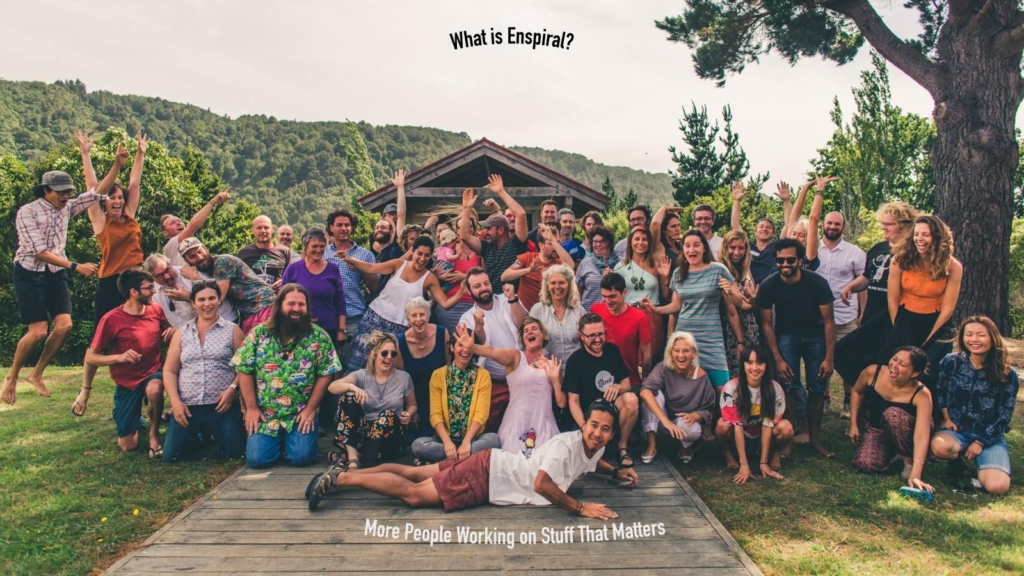
In this way, intentional communities and utopias can serve as short-lived petri dishes for emergent culture. The Findhorn Foundation has been home to several hundred people, but the number of those touched by the community runs to millions. Similarly Enspiral, despite being remotely nestled in Wellington, is now influencing communities around the world by exporting best practices and software tools such as Loomio, for decentralised decision-making, and Cobudget for managing finances within communities and groups.
Today’s experiments in intentional communities benefit from the ease with which best practice and know-how can travel digitally. Experience, wisdom and insight can be shared with a click. Moreover, advances in the science of management have come a long way since the early days of utopian communes, making it easier to collaborate, manage projects and make collective decisions.
But the art of culture-building remains a thornier challenge – one that our ancestral utopias knew all too well. One aspect of that struggle is that business models for many intentional communities remain elusive, or unformed. Self-sufficiency, for example, often means not taking advantage of economies of scale that can support growing populations. At the same time, many communities are chagrined to find themselves servicing voyeurs and tourists for needed cash, which brings ‘mission drift’ to their organisations and a departure from their founding vision. That said, contemporary communities can benefit from the rise of freelancers and digital working, which reduces the agrarian burden and the pressure of self-sufficiency, allowing for more diverse revenue as communities contract with the outside world. Amish e-retailers are one sign of this growing trend.
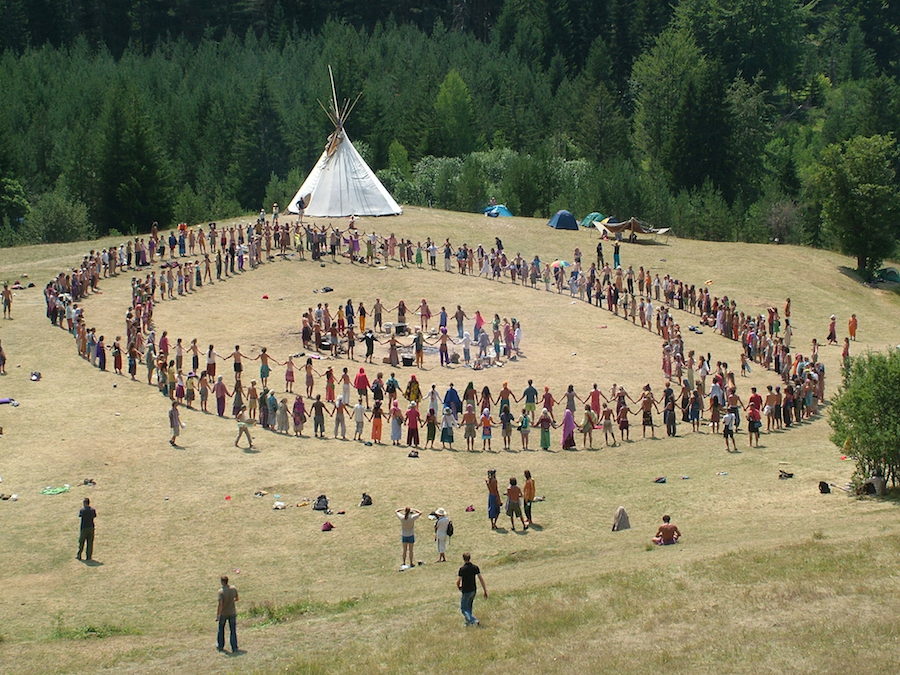
If today’s communities offer escape from the cult of individualism only to end up being ‘walled gardens’ for a privileged class of bohemians, entrepreneurs or spiritual seekers, then perhaps, for all their material success, they might yet be said to have failed. Whether today’s collaborative experiments will create tentacles into more diverse populations or tackle agendas of social justice and economic inequality remains to be seen. Perhaps a more useful construct than intentional community is the idea of ‘shadow culture’, defined by Taylor as a ‘vast unorganised array of discrete individuals who live and think different from the mainstream, but who participate in its daily activities’. Shadow cultures have the potential to hold distinct values, but also utilise the infrastructure and opportunities of mass society. In many ways, then, utopias are only ever tightly glued pockets of shadow culture that mistakenly parade themselves as isolated entities.
____
written by
Alexa Clay a writer and researcher in pursuit of misfit subcultures. She is the co-author of The Misfit Economy (2015). Her writing has appeared in Wired, The Guardian and Vice, among others.
Source:
https://aeon.co/essays/like-start-ups-most-intentional-communities-fail-why
